|
|
|
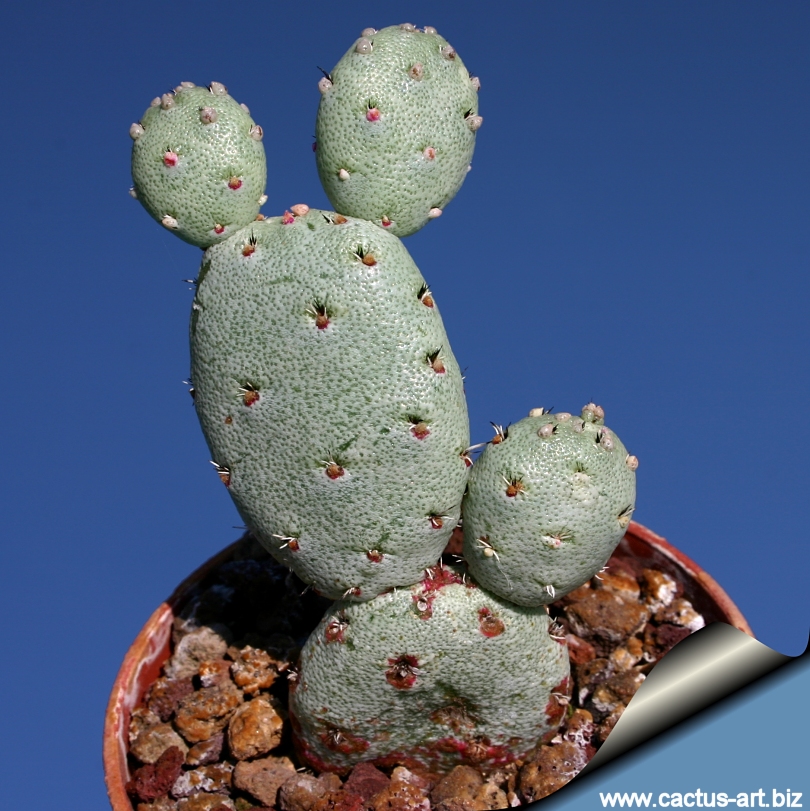
A new cactus
chimera,
Ortegogactus skin on Opuntia body!!!
|
Story:
This original plant appeared unexpectedly in plant of
Ortegocactus macdougalli graftred on an
Opuntia compressa stock, the
graft-chimaera
sprouted up as a small branch from the point of union of the
stock
and
scion
from the
callus containg
tissues
of both species.
|
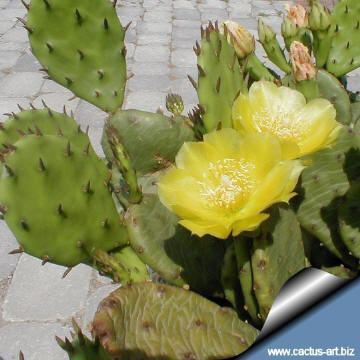
Opuntia compressa |
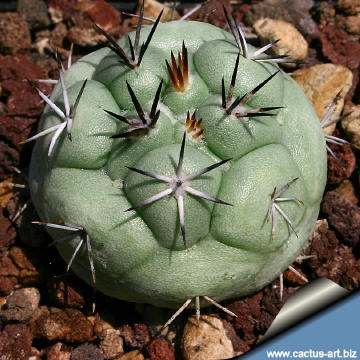
Ortegocactus macdougalli |
|
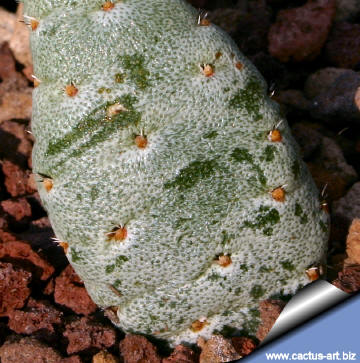 |
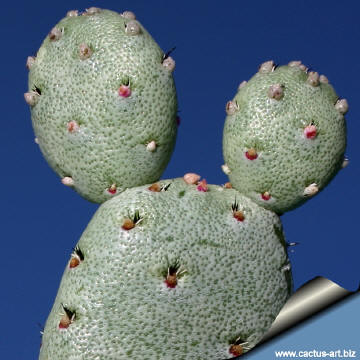 |
|
Description: This is a very slow growing plant with an
external layer of
epidermal cell of
Ortegocactus macdougalli that
cover a second inner layer of tissues of
Opuntia compressa like a glove. The plant colour is the
unmistakable grey-blue metallic tone of the Ortegocactus, but
the plant shape is that of a minuscule Opuntia with small irregular
cladodes up to 3-5 cm of length. This plant is quite unstable and
have a tendency to revert to common Opuntia shoots.
|
|
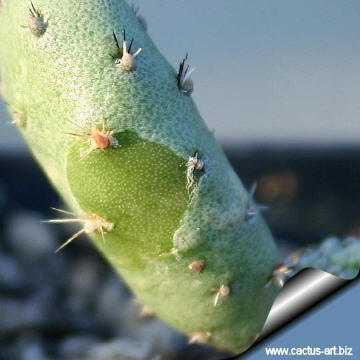
An area with Opuntia skin |
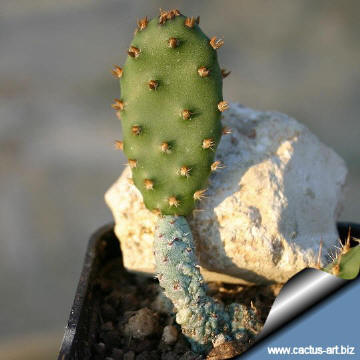
A normal Opuntia pad |
|
Cultivation: We have not a long time for testing the
cultivation requirements of this brand new chimera. The plant seems
of easily cultivation, the main difficulty is to eliminate the
shoots that revert to the Opuntia type, it is advisable to
water the plant moderately, in fact over-feeding and over-watering
may enhance the growth of the more vigorous Opuntia tissues
causing the reversion. This is a
particularly slow
growing plant (like Ortegocactus) and needs a sunny and warm exposure, and possibly
winter temperature not less than 5-10° C. and good air ventilation. |
|


Photo of cactus
chimeras.
|
|
Advertising
|
|
|
|
Family:
Cactaceae
(Cactus Family)
Scientific name:
+Ortegopuntia cv. "Percy"
(Chimerical
cultivar between Ortegocactus macdougalii and Opuntia compressa)
Origin:
Garden origin
(Nursery produced cultivar)
Found and selected in the cactus art nursery in the spring 2004 by
Valentino Vallicelli.
Conservation status: Listed in
CITES appendix ?
Etymology:
A
graft-chimaeras
can be given their own genus name (which is a combination of the two
constituent
generic
names) preceded by a + sign.
+ Ortegopuntia derives from the combination of
Ortegocactus and Opuntia.
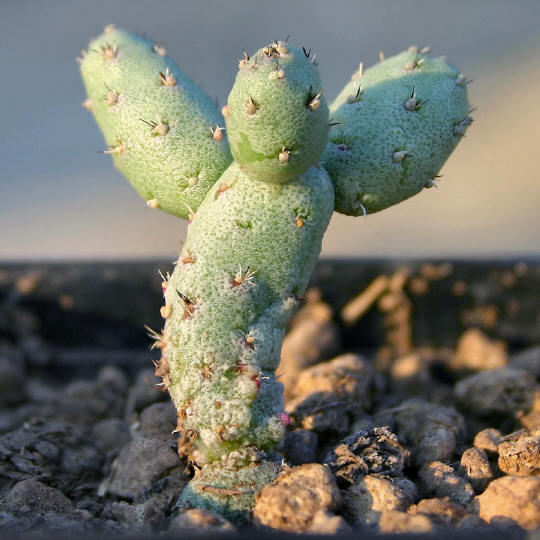
|
|
|
|
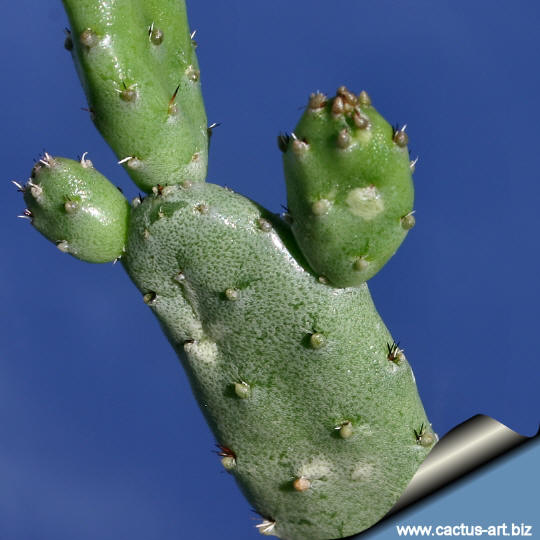
|
|
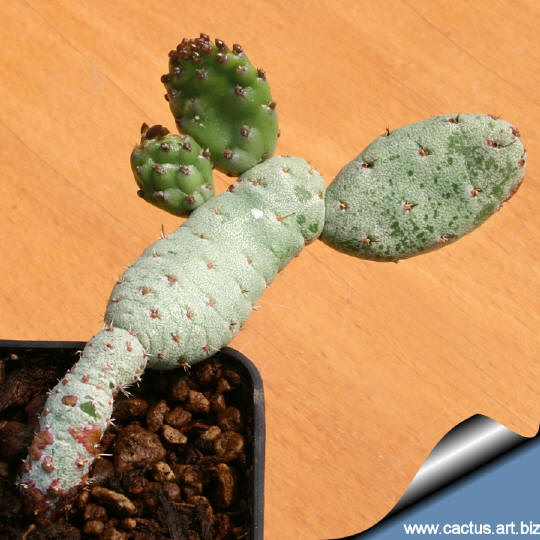
Chimeras in the the Cactaceae family: Chimaeras of plants
belonging to the Cactaceae family
are very rare and quite unusual in cultivation. The first chimera
+ Hylocalycium (Hylocereus undatus +
Gymnocalycium mihanovichii forma rubra “cv. Red Hibotan”), was
described in cactus & succ .J. of America 1987 61- 4 2,
Recently some other chimerical cactus have been
signalled in internet for example:
-
+ Myrtillocalycium (Myrtillocactus geometrizans +
Gymonocalycium cv. Red Hibotan )
-
Gymnocalycium mihanovichii v. fleischerianum + Echinopsis tubiflora.
-
Gymnocalycium mihanovichii v. fleischerianum + Hylocereus guatamalensis
-
Ariocarpus retusus + Echinopsis eyriesii
Chimeras-graft appear more frequently among
Ariocarpus sp. than among any other genus on stock of either
Echinopsis sp. or Myrtillocactus geometrizans.
In some ornamental plants chimaeras may be the result of lengthwise
implanting and sophisticated techniques, a possible methods include cutting
the stem at the midpoint and combining the lobes of stock and scion. It is
supposed that the miscellaneous tissues in the joint point can accrete and
give life to an adventitious new plant "chimera". But - as we know
-
nobody
till
now
has succeeded to make
cacti
chimera on purpose. Circumstances which cause the chimera to appear include
huge numbers of grafts.
|
|